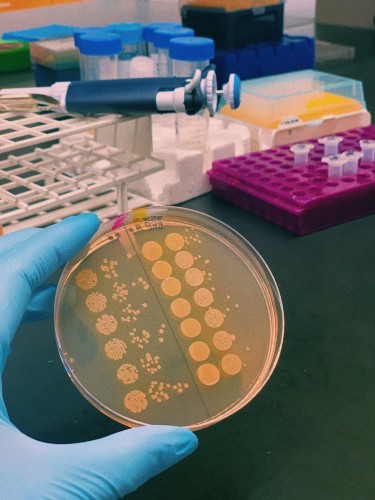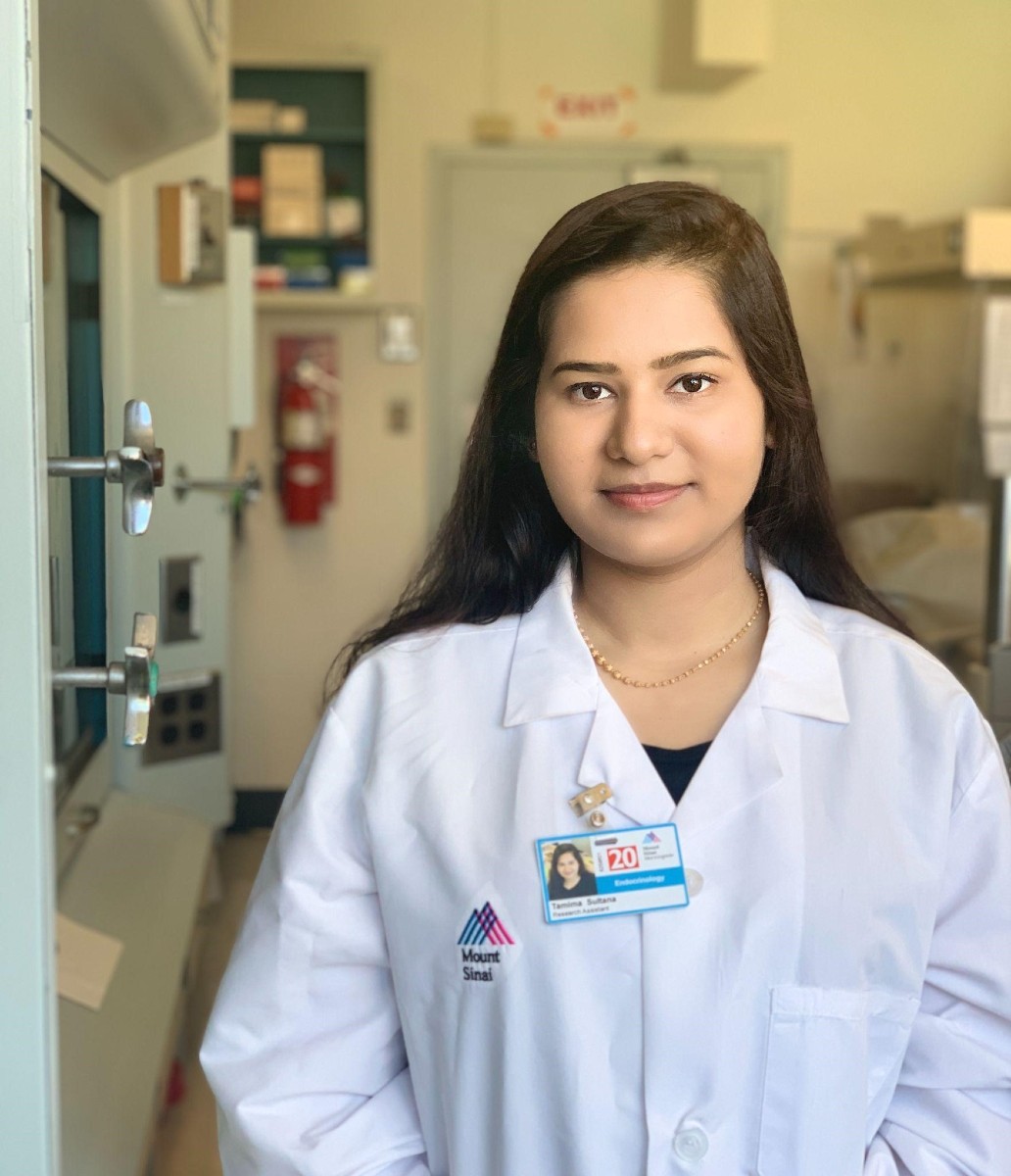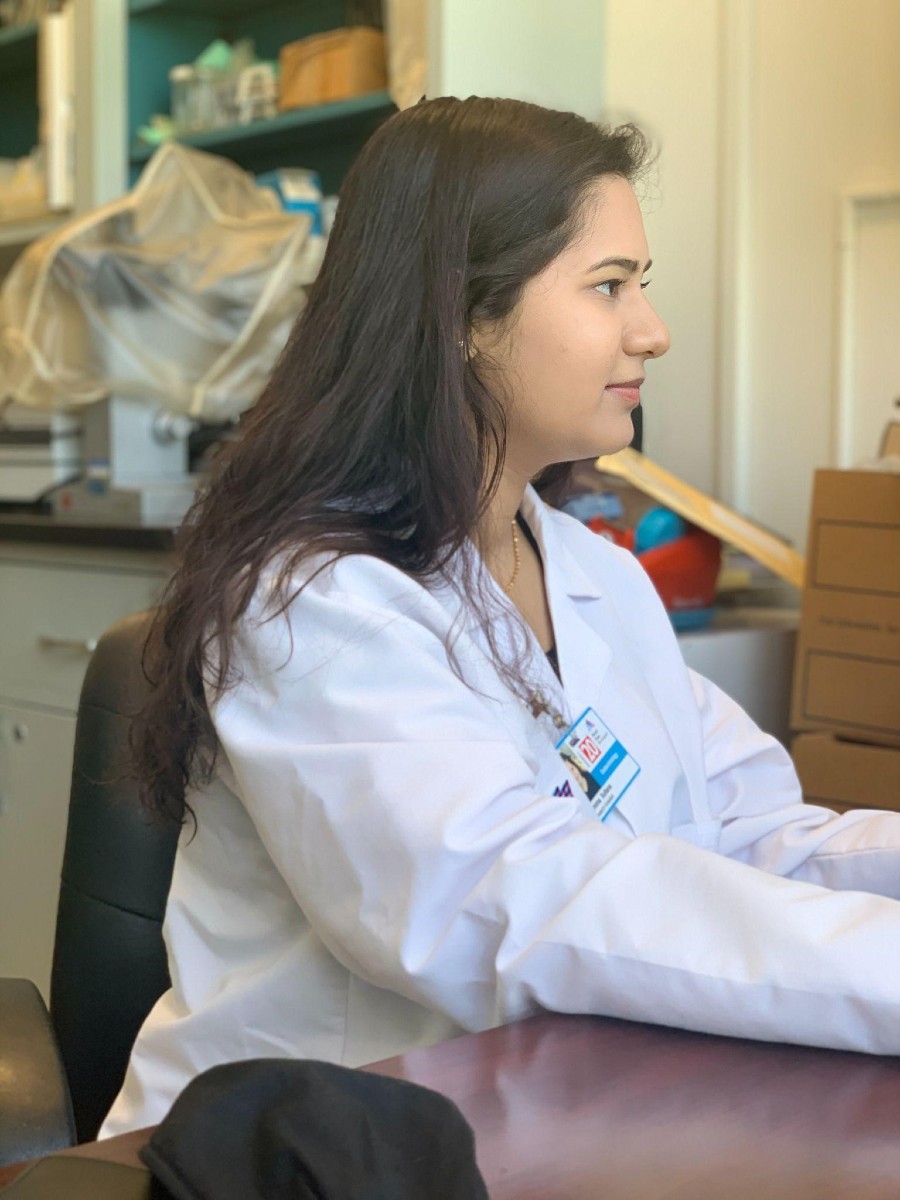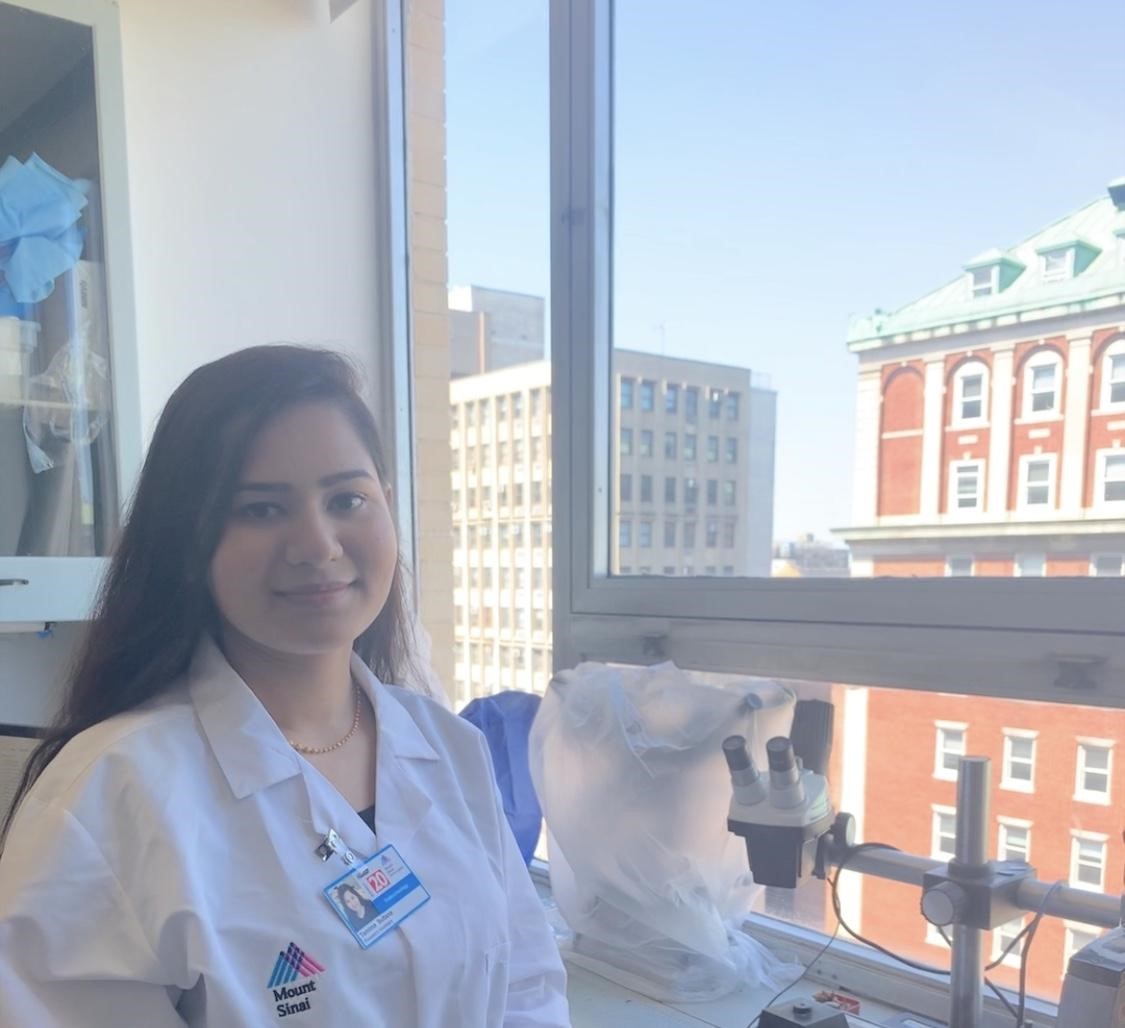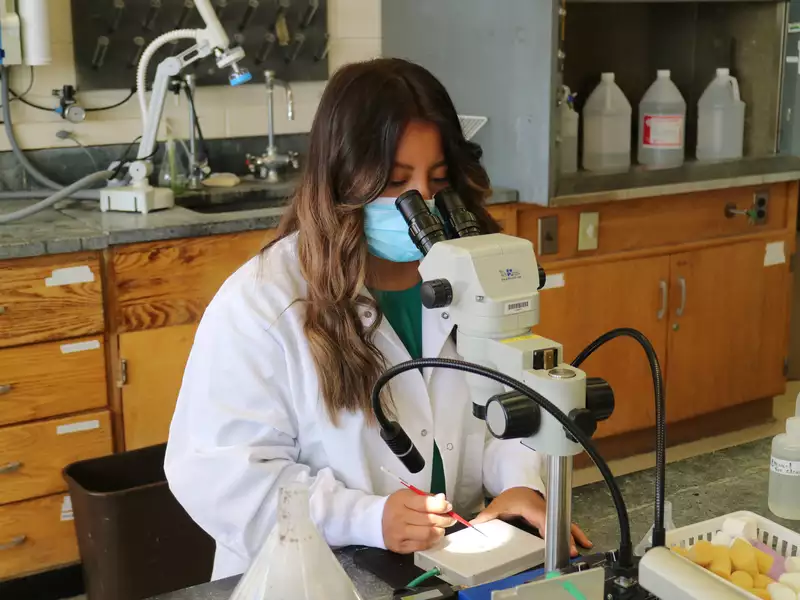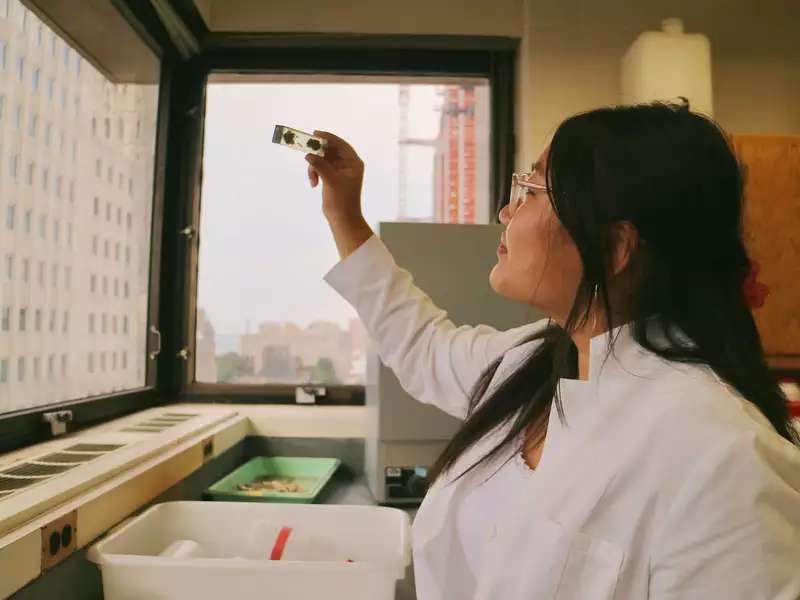Hannah Prensky | Lopatkin Lab
July 2021
Over the last several weeks, I have been working on a summer project in the Lopatkin Lab in Barnard College’s Biology Department. My work so far has consisted of conducting acquisition cost experiments on a panel of dozens of different plasmids in order to follow-up on the molecular mechanisms driving the phenomenon—the plasmid acquisition cost—that we wrote about and published during the Spring 2021 semester. I’ve been conducting similar experiments since March and am proud to say that the quantitative precision of my results improves every time! When talking to Professor Lopatkin about this, she told me that doing science is like playing an instrument. The more you practice, the better you get. She also told me that conducting experiments is a form of art in that sense, which really stuck with me. When training one of our newest lab members, Maya, I imparted this ideology to her as well. The same way that nobody is expected to be a master pianist the first time they sit down at the piano, nobody in our lab is expected to obtain perfect results the first time doing an experiment. In fact, we actually have a saying in the Lopatkin Lab about how nobody’s first experiment ever works, and that’s okay! My first experiment certainly didn’t work; however, practice makes perfect, and I’ve become a lot more confident in my abilities over the course of the summer so far. Training Maya has definitely helped to improve my own results because as I walk her through an experimental protocol, I want to make sure I am passing on the best practices possible, which makes me hyper-aware of everything I am doing. The extra attention to detail I put in while she watches me contributes greatly to the precision and replicability of my data. While I won’t be here to train her much longer, I hope she and all our new experimental members remember not to get discouraged if they find that their first few experiments need improvement because science is an art.
I’ve been conducting similar experiments since March and am proud to say that the quantitative precision of my results improves every time! When talking to Professor Lopatkin about this, she told me that doing science is like playing an instrument. The more you practice, the better you get. She also told me that conducting experiments is a form of art in that sense, which really stuck with me.
Tamima Sultana | Kissileff Lab
August 2021
The Summer Research Institute (SRI) Symposium was on gather.town this year and was a unique experience for everyone who participated. The platform allowed us to connect from all other the globe, share our research, and receive feedback from our respective departments. While virtual spaces can’t compare to in-person meetings, we were all very appreciative of SRI’s efforts to resume the annual symposium. My favorite part was being able to present and share my work with both my professors and peers who were able to stop by my poster. Reconnecting with mentors and friends over our research was definitely one of the highlights during this summer.
Vivian Zhao | Losonczy Lab
August 2021
The past month has been an eventful one! One particularly exciting development is my team’s undertaking of a project focusing on voltage activity in hippocampal pyramidal cells. This project follows largely the same procedures as our project on glutamate dynamics, with a major difference being the type of imaging performed. We are using Bessel beam microscopy to study glutamate, which allows for 3D imaging of live cells with high resolution. To study sharp wave-ripples, or bursts of synchronized activity in the hippocampus, we collect data using an AOD-based two-photon microscope that allows us to rapidly image physiological events. We have been steadily collecting z-stacks of cells and are in the process of reconstructing them in Neurolucida.
In addition to experimental specifics, a critical aspect of research is the model system used. I have noticed that this part of the research is often glossed over in the publications students may read when deciding on a lab to join, but I think it is important to consider how the model system has quite a significant impact on the skills that can be learned and experience that can be gained. One thing I have realized working in a mouse lab is that lab mice are intelligent, endearing, and quite friendly! For example, because we do behavioral training for several weeks per mouse, they eventually learn to identify the cues that lead to their daily watering. As soon as I remove the food hopper and running wheel from their cage, they eagerly circle around the lick port even before I insert their water bottle. After a few days of human interaction, they also learn that they can safely groom themselves in my palm.
The most rewarding part of behavioral training is being able to watch a mouse learn how to run on its own in real time. I imagine that the moment they realize that running leads to a water reward is a researcher’s equivalent to a parent watching their child finally learn how to ride a bike. Working on behavioral experiments with mice has been a surprising exercise in trust-building, non-verbal communication, and caring for other forms of life. It is a true privilege to be able to learn so much from these wonderful creatures and experience small victories with them every day!
In addition to experimental specifics, a critical aspect of research is the model system used. I have noticed that this part of the research is often glossed over in the publications students may read when deciding on a lab to join, but I think it is important to consider how the model system has quite a significant impact on the skills that can be learned and experience that can be gained. One thing I have realized working in a mouse lab is that lab mice are intelligent, endearing, and quite friendly!
Isabella Villa Real Seabra | Experimental Biochemistry and Computational Pharmacology Lab
July 2021
For the past weeks I have been mainly working on my python code and that has definitely been the most challenging part of my research project. I get really frustrated when I get stuck in a line of my code so I usually take a couple of hours to focus on something else before I try to solve it. Although that usually does the trick, there have been times when I was only able to move forward after receiving help from someone else. I guess that is the main advice I have to give to anyone considering doing research. Do not be afraid to ask for help! Your advisors and research mentors are here to help and you should feel comfortable talking to them and asking questions. Conducting research can be very frustrating, especially when you are still building your background experience, so do not let unexpected/negative results set you back and quit.
In light of that, I feel that what I am most proud of is being able to code with a few friends in zoom. Because of the pandemic, I have been working half of the time from home. Being someone with ADHD, focusing on my work online when I am with my friends was especially hard. So I was really hesitant when a friend that conducts research in computational astrophysics asked if I wanted to work while on a call. That turned out to be one of my most fulfilling experiences. We were able to help each other while keeping each other company. Our coding experiences complemented each other and we were able to spend time together, even if not in person.
